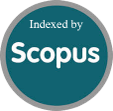Heart failure remote monitoring: novel approaches and management strategies
DOI:
https://doi.org/10.51798/sijis.v5i2.756Keywords:
Heart Failure, Remote, MonitoringAbstract
Background. Globally, heart failure is a leading health problem, with an estimated 64 million cases worldwide, including 6.7 million in the U.S., according to estimates. The U.S. economic burden is expected to see a steep rise by the year 2030. Heart failure is a cause of 8.5% of heart disease-related deaths and a central cardiovascular killer. Emergency hospitalization rates and readmission rates are high. Methods: A systematic methodology was followed to generate authentic and reliable data on remote monitoring in the setting of heart failure patients. The inclusion criteria comprise articles describing remote monitoring interventions published in peer-reviewed journals and carried out in human subjects in English. Critical analysis applies quality assessment tools to assess methodological soundness, possible bias, and relevance to the research objective. Results: This review discusses wearable devices, e.g., Zoll HFMS ReDS, and Audicor, each effectively monitoring cardiac parameters and reducing H.F. hospitalizations. Implantable cardiac monitors such as LUX-Dx and CardioMEMS H.F. RM has potential to give real-time data for timely intervention and tailored therapies. The integration of machine learning algorithms in devices, for example, VitalPatch and the SimpleSense has led to increased use of these devices to make precise and efficient health care predictions, leading to improved patient outcomes. Conclusion: From all the research, remote monitoring devices and strategies are recommendable for patients with various cardiac complications. It can improve heart function, however, R.M. has not been seen to reduce the overall mortality rate among heart patients.
References
Abbott. (n.d.). About the CardioMEMS HF System. Retrieved from https://www.cardiovascular.abbott/us/en/hcp/products/heart-failure/pulmonary-pressure-monitors/cardiomems/about.html
Alugubelli, N., Abuissa, H., & Roka, A. (2022, November 17). Wearable devices for remote monitoring of heart rate and heart Rate Variability—What we know and what is coming. Sensors, 22(22), 8903. https://doi.org/10.3390/s22228903
American Heart Association. (2023). Types of heart failure. Retrieved from https://www.heart.org/en/health-topics/heart-failure/what-is-heart-failure/types-of-heart-failure
British Heart Foundation. (n.d.). Implantable loop recorders. Retrieved from https://www.bhf.org.uk/informationsupport/tests/implantable-loop-recorders
Chia, P. L., & Foo, D. (2016). Overview of implantable cardioverter defibrillator and cardiac resynchronization therapy in heart failure management. Singapore Medical Journal, 57(07), 354–359. https://doi.org/10.11622/smedj.2016117
Dhanvijay, M. M., & Patil, S. D. (2019, April 1). Internet of Things: A survey of enabling technologies in healthcare and its applications. Computer Networks, 153, 113–131. https://doi.org/10.1016/j.comnet.2019.03.006
Fudim, M., Mirro, M. J., & Cheng, H. (2022, March 1). Audicor Remote Patient Monitoring. JACC: Basic to Translational Science, 7(3), 313–315. https://doi.org/10.1016/j.jacbts.2022.02.007
Fudim, M., Yazdi, D., Egolum, U., Haghighat, A., Kottam, A., Sauer, A. J., ... & Felker, G. M. (2023, May 1). Use of a cardiac scale to predict heart failure events: Design of SCALE-HF 1. Circulation: Heart Failure, 16(5). https://doi.org/10.1161/circheartfailure.122.010012
Gregoratos, G., Cheitlin, M. D., Conill, A., Epstein, A. E., Fellows, C. L., Ferguson, T. B., ... & ACC/AHA Guidelines for Implantation of Cardiac Pacemakers and Antiarrhythmic Devices Writing Committee. (1998, April 7). ACC/AHA guidelines for implantation of cardiac pacemakers and antiarrhythmic devices: Executive summary. Circulation, 97(13), 1325–1335. https://doi.org/10.1161/01.cir.97.13.1325
Heart Failure Society of America. (n.d.). Heart failure facts & information. Retrieved from https://hfsa.org/patient-hub/heart-failure-facts-information.
Holzmann, S. L., & Holzapfel, C. (2019, June 7). A scientific overview of smartphone applications and electronic devices for weight management in adults. Journal of Personalized Medicine, 9(2), 31. https://doi.org/10.3390/jpm9020031
Imberti, J. F., Tosetti, A., Mei, D., Maisano, A., & Boriani, G. (2021, May 7). Remote monitoring and telemedicine in heart failure: Implementation and benefits. Current Cardiology Reports, 23(6). https://doi.org/10.1007/s11886-021-01487-2
Johns Hopkins Medicine. (2019). Loop recorder implantation. Retrieved from https://www.hopkinsmedicine.org/health/treatment-tests-and-therapies/loop-recorder-implantation
Johns Hopkins Medicine. (2022). Vital signs (Body temperature, pulse rate, respiration rate, blood pressure). Retrieved from https://www.hopkinsmedicine.org/health/conditions-and-diseases/vital-signs-body-temperature-pulse-rate-respiration-rate-blood-pressure
Johns Hopkins Medicine. (2023). Cardiac resynchronization therapy. Retrieved from https://www.hopkinsmedicine.org/health/treatment-tests-and-therapies/cardiac-resynchronization-therapy
Kobe, E. A., McVeigh, T., Hameed, I., & Fudim, M. (2023). Heart Failure Remote Monitoring: A Review and Implementation How-To. Journal of Clinical Medicine, 12(19), 6200. https://doi.org/10.3390/jcm12196200
Lala, A., Barghash, M., Giustino, G., Álvarez‐García, J., Konje, S., Parikh, A., ... & Solomon, S. D. (2020, December 18). Early use of remote dielectric sensing after hospitalization to reduce heart failure readmissions. Esc Heart Failure, 8(2), 1047–1054. https://doi.org/10.1002/ehf2.13026
Ledziński, Ł., & Grześk, G. (2023). Artificial intelligence Technologies in Cardiology. Journal of Cardiovascular Development and Disease, 10(5), 202. https://doi.org/10.3390/jcdd10050202
Mayo Clinic. (2023). Heart failure - Symptoms and causes. Retrieved from https://www.mayoclinic.org/diseases-conditions/heart-failure/symptoms-causes/syc-20373142
Mayo Clinic. (2023, August 15). Implantable cardioverter-defibrillators (ICDs). Retrieved from https://www.mayoclinic.org/tests-procedures/implantable-cardioverter-defibrillators/about/pac-20384692
Mayo Clinic. (2024). Artificial Intelligence (A.I.) in Cardiovascular Medicine - Overview. Retrieved from https://www.mayoclinic.org/departments-centers/ai-cardiology/overview/ovc-20486648
Mph, E. M. (2023). 7 Common remote patient monitoring devices. Health Recovery Solutions. Retrieved from https://www.healthrecoverysolutions.com/blog/7-common-remote-patient-monitoring-devices
Nanowear. (n.d.). SimpleSense, by Nanowear. Retrieved from https://www.nanowearinc.com/simplesense
Nationwide Children's Hospital. (n.d.). Transtelephonic Monitor (TTM) 30-day looping event monitor. Retrieved from https://www.nationwidechildrens.org/family-resources-education/health-wellness-and-safety-resources/helping-hands/transtelephonic-monitor-looping
Puette, J. A. (2022). Pacemaker. StatPearls - NCBI Bookshelf. Retrieved from https://www.ncbi.nlm.nih.gov/books/NBK526001/
Rocket. (2023). History & future of cardiac remote patient monitoring. Vector Remote. Retrieved from https://vectorremote.com/history-future-of-cardiac-remote-patient-monitoring/
Strategic Market Research. (2023). Global remote patient monitoring statistics (2023) - Facts & figures. Retrieved from https://www.strategicmarketresearch.com/blogs/remote-patient-monitoring-statistics
Vucetic, Z. (2023, June 15). Natriuretic peptides in heart failure. Medical Laboratory Observer. Retrieved from https://www.mlo-online.com/diagnostics/biomarkers/article/53062724/natriuretic-peptides-in-heart-failure
Vyas, R., Patel, M., Khouri, S., & Moukarbel, G. V. (2023). A profile on the CardioMEMS HF system in the management of patients with early stages of heart failure: An update. Expert Review of Medical Devices, 20(8), 621–631. https://doi.org/10.1080/17434440.2023.2228683
Zhang, J. X. J., & Hoshino, K. (2014). Implantable sensors. In Elsevier eBooks (pp. 415–465). https://doi.org/10.1016/b978-1-4557-7631-3.00007-7
Downloads
Published
How to Cite
Issue
Section
License
Copyright (c) 2024 Cristian Xavier Proaño Bautista, Angie Pauleth Tinoco Aguilar, Rayza Alexandra Andrade Valenzuela, Arellys Jacqueline Zamora Pachay, Jorge Nicolás Vega Pacheco

This work is licensed under a Creative Commons Attribution-NonCommercial-NoDerivatives 4.0 International License.




